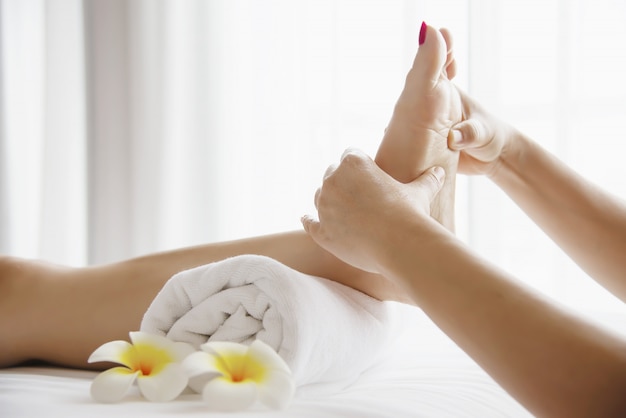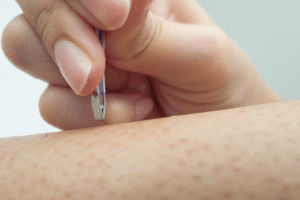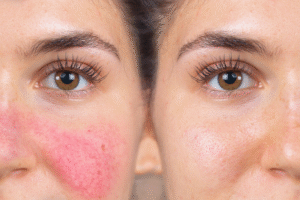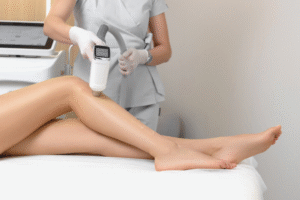Last week we explained why they’re so important. Now, it’s time for some fun, as we outline the four main types – all offered by us here at Lovoir.
Swedish massage
We’ll put it like this: In Sweden, it’s just known as a classic massage. And that is exactly what it is.
What should I expect from a Swedish massage?
Five types of massage techniques, including effleurage (rubbing your muscles in long gliding movements, pushing blood towards your heart), kneading and tapping. Using softer strokes on the more delicate part of the body and stronger strokes on the thicker muscles, it’s the ideal combination for relaxation. Coupled with essential oils to suit your skin type and calming music, it’s the perfect way to unwind.
You can either have a full body massage or choose just one specific area, with back, neck and shoulders the most popular.
Does Swedish massage include head?
A Swedish massage may or may not include a head massage, depending on what day spa you go to.
While this type of massage mostly focuses on the limbs, back, shoulders and neck, you can easily ask your massage therapist to add a scalp massage at the end if you feel like you need it!
Is a Swedish massage for me?
Unless you don’t want to feel more relaxed while having your muscles soothed and circulation improved, a Swedish massage – the most popular type out there – is for everyone!
Anything else?
Just an interesting piece of history for you! The name comes from the early 19th century, where a Swedish physiologist developed a system called “Medical Gymnastics”.
A study in The New York Times found that those who received a 45-minute Swedish massage experienced a significant decrease in the levels of the stress hormone cortisol and increase in the number of the white blood cells that are part of the immune system.
Book a swedish massage now!

Deep tissue massage
Deep tissue does what it says on the tin, getting down to the deepest layers of tissue to help realign them. The result? A knock-on relieving effect for your bones, joints and muscles!
What should I expect from a deep tissue massage?
We may use our forearms, elbows, fingertips, knuckles and hands – anything, really – to break down the rigid tissue responsible for the pain, inflammation and restricted movement you’re experiencing. As a result, you should expect to experience some discomfort. This is because scar tissue is being loosened, knots are being undone and layers of muscle are being moved back to the right place. Sounds traumatic, but you know what they say – no pain, no gain! Also, while we will exercise deep pressure throughout, we’ll do so alongside softer strokes, too.
You may experience some stiffness or tenderness afterwards, but this shouldn’t last for more than a couple days. Stretching, applying ice to painful areas, drinking water and a warm bath can all help alleviate this.
Deep tissue vs. Swedish massage
Compared to a Swedish massage, a deep tissue massage uses stronger and more concentrated pressure on problematic areas.
Basically put, just think of it this way: Deep tissue massage techniques are a more intense version of a Swedish massage.
Is a deep tissue massage for me?
Experiencing chronic tensions and aches – such as a stiff neck or back, tight legs or sore shoulders – that a classic Swedish just can’t alleviate? Then this might be just what the doctor ordered.
It usually focuses on a specific problem, such as chronic muscle pain or injury rehabilitation, to help reduce pain and increase mobility. Some examples include:
- Carpel tunnel syndrome
- Tennis elbow
- Whiplash
- Repetitive strain injury
- Sciatica
- Sports injury
- Recovery from a fall
- Muscle tension or spasms
- Fibromyalgia
Anything else?
Deep tissue has been found to be more effective in relieving musculoskeletal issues than a wide range of alternatives, such as exercise, medication and diet. Because it helps to relax muscles, it will also increase both blood flow and oxygen around your body, contributing to overall health.
Book a deep tissue massage now!

Reflexology
Reflexology is a safe, non-invasive, complementary touch therapy that dates back to Ancient Egypt, India and China. By focusing on the feet, it helps promote deep relaxation and wellbeing.
It is based on the notion that the feet are a micro-system of the whole body, meaning, in practice, that touching different points on them will positively affect other areas of the body which have been impacted by energy pathways becoming blocked.
There are different theories as to how it actually works. Some attribute it to nerve impulse – the idea that pressing one point sends a signal to the brain to impact a corresponding point through the nervous system. Others believe it unblocks peaks of energy, in a similar way to acupuncture.
What should I expect from reflexology?
There may be moments of pain, but Reflexology is – on the whole – a generally relaxing experience, in which we’ll use specific finger and thumb techniques to apply pressure to various points in your feet. You may feel lethargic, nauseous or even a bit teary, but this won’t last long! Your feet may also feel a bit tender afterwards, too!
Is reflexology for me?
Reflexology is suitable for all ages and great for:
- Reducing stress
- Restoring balance
- Improving sleep
- Relaxation
- Enhancing mood
- Reducing pain
- Hormonal issues
- Sports injuries
- Chronic illness
- Boosting the immune system
Whether you use it to treat a specific problem, as a maintenance to keep that problem at bay or just as a wonderfully relaxing stress-reliever, Reflexology is for you!
Anything else?
Reflexology is a very individual treatment, meaning we’ll try tailor it to you as much as possible, taking into account any relevant physical and psychological issues.
Book reflexology now!

Indian head massage
As its name suggests, this ancient therapeutic technique originates from India and is now incredibly popular in the Western world, too.
This is – partly – down to its simplicity and flexibility. Despite only referencing the head in its name, an Indian head massage also treats the pressure points in your shoulders and neck. It incorporates the three chakras – mind, body and spirit – which are believed to be found in the throat, brow and crown.
But apart from its fancy name, an Indian head massage is basically a traditional scalp massage using specialised healing techniques.
What should I expect from an Indian head massage?
A series of circular movements, strokes and stretches. It requires no equipment, meaning it’s very low maintenance but highly effective.
A safe and gentle therapy, a typical Indian head massage usually starts with the shoulders and upper back, using flowing motions to help relieve any stress and tension, before settling on the scalp. It then makes its way up the forehead and around the eyes. We finish it off with a luxurious warm oil, ultra-nourishing hair treatment – utter bliss!
Is an Indian head massage for me?
Does your head, hair and scalp need some TLC? Then absolutely! Some specific benefits include:
- Hair health and growth, thanks to the increase in oxygen and nutrients delivered to the follicles
- Headache reduction
- Unblocked sinuses
- Renewed energy levels
- Muscle relief
- Improved mental health
- Memory boost
- Brighter eyes
- Better sleep
Anything else?
It originates from an alternative Indian medicine system called Ayurveda (meaning the ‘science of life’), which hinges on the belief that the body and mind are intricately connected. As a result, an Indian head massage doesn’t only improve overall physical wellbeing, it can also help boost your mental health, too. In fact, it is now seen as a primary form of stress management.
Traditionally, it was used at weddings and births, particularly by mothers on their daughters.
Book an indian head massage now!

The Best Massages in Christchurch NZ
Before you book your massage, keep this in mind: It may not be best for you if you’re pregnant, at risk of blood clots, have recently had surgery or have any other medical condition, so make sure to speak to us beforehand. It’s also not advisable to have a massage after eating a big meal or drinking alcohol.
All that said, once you’re in the clear, head on over to Lovoir Day Spa for the best massages Christchurch locals trust!
Apart from the four types mentioned in this article, we also have an array of other massages – like a pregnancy massage, aromatherapy massage, hot stone massage among others. Just let us know what your body needs and we’ll be sure to recommend the best type of massage for you. See you soon!
Visit our Beauty Salon & Day Spa at Lovoir The Crossing:
The post What Types of Massage Are There? appeared first on Lovoir Beauty.





